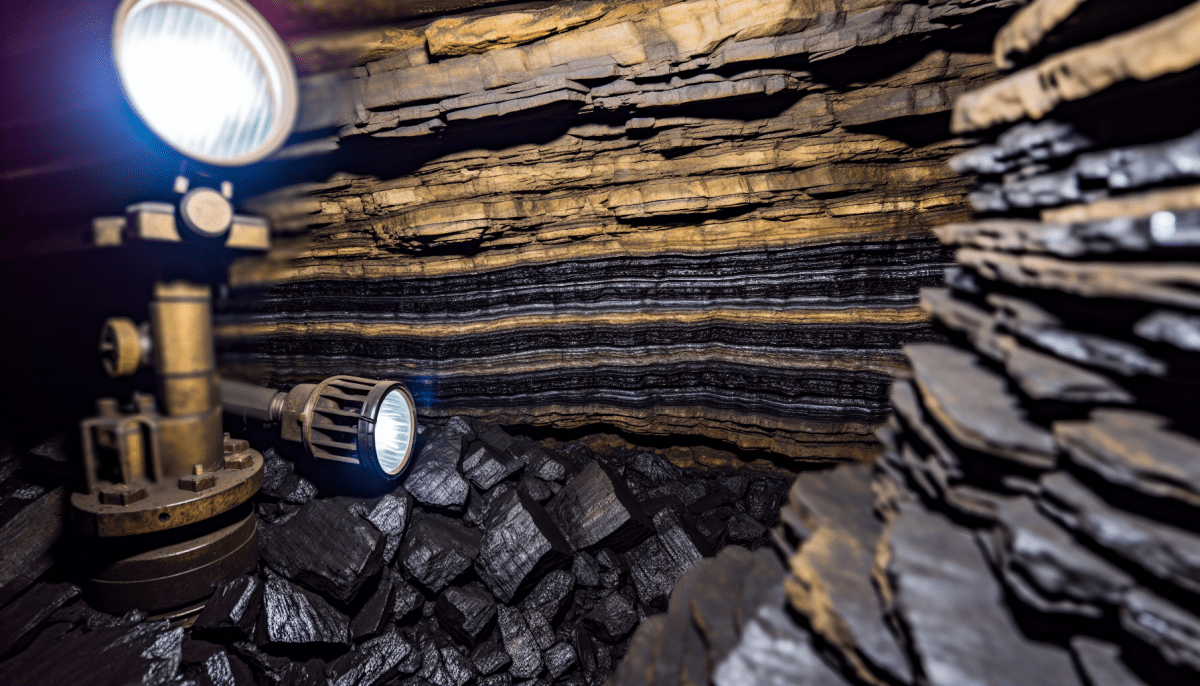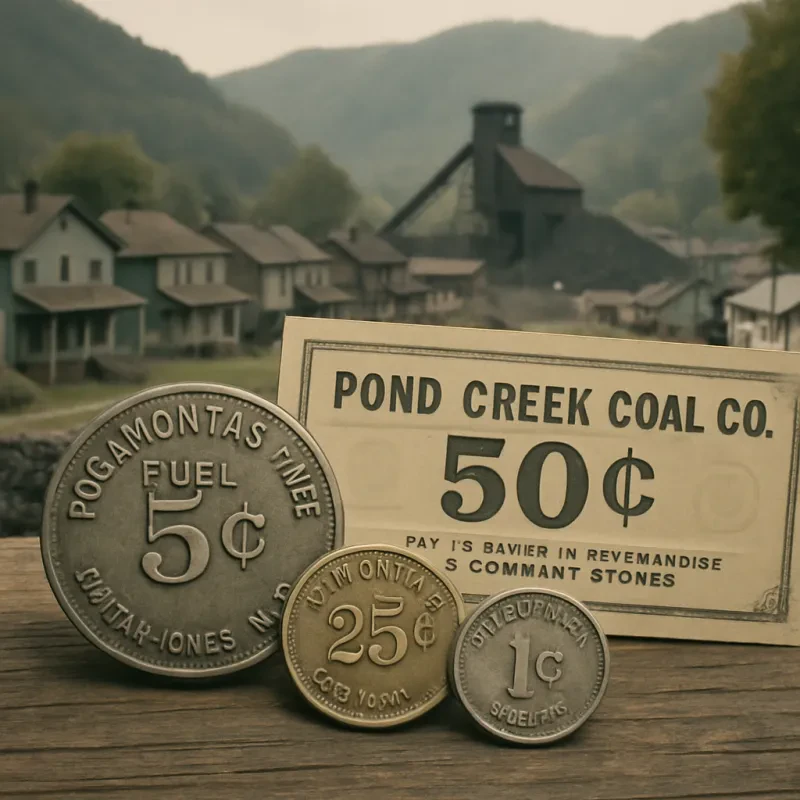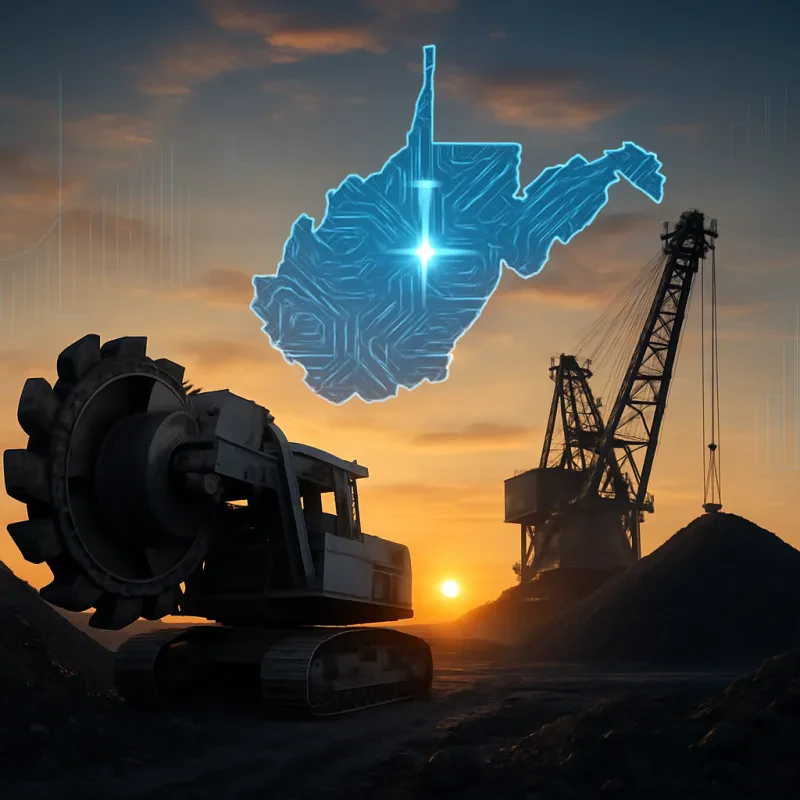Uncovering the Riches: Coal Seams of West Virginia
West Virginia, the heart of America's coal country, boasts an extensive network of coal seams that have powered the nation for centuries. These reserves are not just significant sources of energy; they are historical landmarks that narrate the story of the state and its contribution to industrial progress. In this article, we dive deep into the details of seven notable coal seams in West Virginia, exploring their geography, ownership, historical significance, and the future that lies beneath their rugged landscapes.
1. Pittsburgh Seam
Geography and Ownership
The Pittsburgh Seam, sprawling across the Northern and Central parts of West Virginia, is particularly prominent in counties like Marion, Monongalia, and Harrison. This seam is owned and operated by a mix of large coal corporations and smaller, local mining companies, reflecting a diverse ownership structure that has evolved over the years.
Historical Context
The Pittsburgh Seam has been the backbone of West Virginia's coal industry since the late 19th century. Its coal is known for its high quality, making it a preferred choice for both steel production and electricity generation.
Future Prospects
With an estimated several decades of coal remaining, the Pittsburgh Seam continues to be a significant player in the energy sector. However, the exact years of coal remaining are subject to mining rates and technological advancements in coal extraction.
2. Eagle Seam
Geography and Ownership
Located primarily in Boone and Logan Counties, the Eagle Seam is under the control of a few major coal companies. These entities manage the extraction process and are responsible for the seam's development and conservation efforts.
Historical Context
The Eagle Seam's coal has been instrumental in the development of the local economy, providing thousands of jobs and serving as a critical energy source for the nation.
Future Prospects
Estimates suggest that the Eagle Seam has enough coal for another 20-30 years, depending on extraction technology improvements and market demand.
3. Pocahontas No. 3 Seam
Geography and Ownership
This seam extends through Mercer and McDowell Counties and is famous for its high-grade metallurgical coal. Ownership is divided among several large mining corporations with significant investments in the area.
Historical Context
The Pocahontas No. 3 Seam has a rich history dating back to the late 1800s, contributing significantly to the American steel industry's growth. It is also known for the role it played in fueling the nation during World Wars.
Future Prospects
With stringent mining practices and improved extraction technologies, the Pocahontas No. 3 Seam has an expected lifespan of 25-35 more years.
4. Sewell Seam
Geography and Ownership
Found in Fayette and Raleigh Counties, the Sewell Seam is predominantly managed by a combination of national and international coal enterprises, reflecting the global importance of this coal source.
Historical Context
Historically, the Sewell Seam has been celebrated for producing high-quality "smokeless" coal, a critical resource for naval ships and locomotives throughout the 20th century.
Future Prospects
Analyses indicate that the Sewell Seam, with careful management and responsible mining practices, has the potential to produce coal for another 30 years.
5. Upper Big Branch Seam
Geography and Ownership
The Upper Big Branch Seam, located in Raleigh County, is controlled by a major coal mining company known for its extensive operations in the region.
Historical Context
This seam gained national attention following the tragic mining accident in 2010. Despite its somber history, it remains a significant coal production site.
Future Prospects
Current estimates suggest a remaining lifespan of approximately 20 years for the Upper Big Branch Seam, depending on the pace of mining activities.
6. Kanawha Seam
Geography and Ownership
Stretching across Kanawha and Fayette Counties, this seam is managed by a mix of longstanding coal corporations and newer entities that have entered the coal mining sector.
Historical Context
The Kanawha Seam has a storied past, contributing to West Virginia's reputation as a coal powerhouse since the early 20th century. Its coal has been pivotal in industrial and power generation applications.
Future Prospects
With an expected 25-40 years of coal left, the Kanawha Seam's future is closely tied to market demands and environmental regulations.
7. Beckley Seam
Geography and Ownership
The Beckley Seam, found in Raleigh County, is operated by a few key players in the coal industry, which have invested heavily in the region's mining infrastructure.
Historical Context
Known for its thick coal layers and high-quality output, the Beckley Seam has been a vital energy source for over a century, playing a crucial role in local and national economic development.
Future Prospects
Projections for the Beckley Seam suggest that with current extraction methods, it could continue to produce coal for another 15-25 years.
The coal seams of West Virginia are not just significant sources of energy; they are emblematic of the state's enduring legacy in powering America's growth and industrial might. Each seam, with its unique history and geographical footprint, tells a story of resilience, innovation, and the unyielding pursuit of progress. As the coal industry evolves amidst changing technologies and a shifting energy landscape, these seams stand as testaments to a rich past and a source of potential for the future. The future of coal mining in West Virginia, and indeed these seven seams, is inextricably linked to advancements in mining technologies, environmental considerations, and shifts in global energy demand. With a keen eye on sustainable practices and the potential for new uses of coal in the creation of advanced materials and clean energy technologies, the legacy of these coal seams may well extend beyond their traditional roles. As stewards of these significant geological and historical resources, the companies and communities of West Virginia are faced with the challenge of balancing economic interests with environmental stewardship. The path forward will likely involve a combination of leveraging the remaining coal resources responsibly, while also exploring and investing in renewable energy sources and economic diversification to ensure the long-term sustainability and prosperity of the region. In summary, the coal seams of West Virginia are more than just layers of sedimentary rock; they are the bedrock of a state's identity and a nation's industrial history. As we look to the future, the story of these seams continues to unfold, promising new chapters of innovation, adaptation, and sustainable growth.







